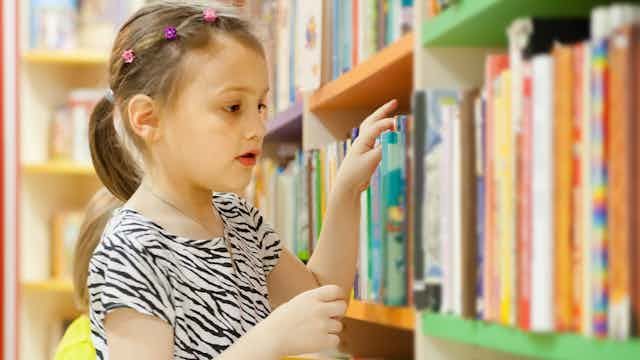U.S. public libraries often transform into shelters during emergencies.
After Superstorm Sandy, for example, the Princeton Public Library in New Jersey and Connecticut’s New Canaan Library gave the public somewhere to charge devices, contact loved ones or even just watch movies. Other New Jersey libraries went further: The Roxbury Public Library opened early and closed late. South Orange’s library became its primary evacuation center.
Libraries don’t just pitch in following natural disasters. In August 2014, the Ferguson Municipal Public Library became a safe space amid the unrest that followed the shooting of Michael Brown, an unarmed black teen, by a police officer in the St. Louis suburb. After local schools started the school year two weeks behind schedule, leaving students in the lurch, the library even hosted informal classes for hundreds of students.
As millions of people in cities, suburbs and towns are reeling from Hurricane Harvey, nearby public libraries will soon play a critical role in creating a sense of normalcy for all ages – but especially for kids and teens. To help more public libraries emulate these examples with their young patrons, I teamed up with three graduate students to create a youth services toolkit to help librarians pitch in during emergencies. It will soon be available in a digital format at the Library of Michigan’s Youth Library Services website.
Caring for kids
In some states, libraries are partnering with first responders and emergency personnel to care for adults during crises. But many public libraries have not focused on the care of children – even though children can experience benign neglect in times of crisis.
That’s why the National Child Traumatic Stress Network recommends that parents openly share information, patiently answer questions and reassure children that they’re safe during and after natural disasters.
Libraries can help parents and caregivers with these tasks: They can provide a safe space, room to play and study, and loads of information. This can be handy when libraries serve as cooling or warming centers when it’s too hot or cold to be outside.

Mobilization for librarians
As part of our research for the toolkit, we surveyed youth services librarians across the country to learn about their emergency preparation. Our survey provided a glimpse into youth services disaster planning, including the information these respondents would want to see in a toolkit.
The survey showed that while some of these libraries had experienced disasters in their community before, 25 out of the 37 respondents had no preparatory plans for dealing with disasters, such as adapting their programs or collaborating with community partners.
Through this survey, we also identified three libraries that have dealt with varying degrees of crises in their community, which we used as case studies within the guide. For example, Lauren Hough, a youth services librarian at the Preston Royal Library (a branch of the Dallas Public Library), implemented the Storytime Underground’s Social Justice Storytime Framework to openly address the deadly conflict between protesters and police officers in July 2016. She reports the community response has been astoundingly positive.
Our toolkit includes tips for one of our profession’s most basic duties: building, maintaining and promoting a library’s collection of books and other resources – especially for kids and teens. Amid natural disasters, libraries can display items such as picture books that help kids cope with their emotions, positive or negative. “Tough Guys Have Feelings Too” by Keith Negley is a great example. It reminds us that male wrestlers and astronauts – like dads – have and express feelings.
Libraries without collections that address disasters and other kinds of crises should consider adding books and other media on preparing for and coping with disasters appropriate for all ages.
Our toolkit also explains that librarians can help during emergencies by adjusting regularly scheduled children’s programs. Storytime themes can change to suit the new situation. For instance, librarians can set aside plans to talk about gardening and instead read books about overcoming fear. One good option: “Franklin in the Dark” by Paulette Bourgeois. Its turtle protagonist, who is scared of the dark in his own shell, meets several other animals – each with its own fears.
Unscheduled activities that demand little or no library staff interaction, such as having young children color preprinted pages with crayons or encouraging kids of any age to draw, can also help young people relax.

Community connections
Well before disasters strike, libraries can prepare for them by forging partnerships with other pillars of the community, including nonprofits.
For example, celebrations to mark the end of a summer reading program are ideal opportunities to bring firefighters, police officers and other first responders into contact with families. Those interactions can lay the groundwork for smoother collaboration when it matters most.
Libraries can provide entertainment and, more importantly, information about free resources – shelters, food banks and emergency procedures. By creating collaborative relationships before a time of need, libraries can serve their communities better when a crisis comes.
We hope our toolkit will help libraries collaborate with community groups, adapt their programs during emergencies and maintain disaster-related collections – the basic steps required to respond to crises like Hurricane Harvey.

